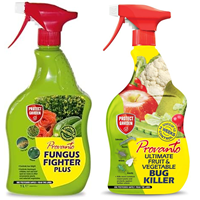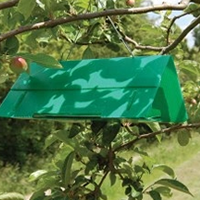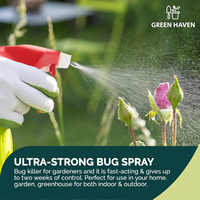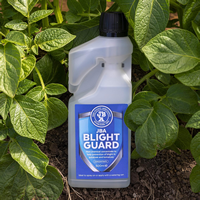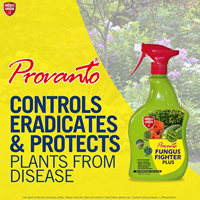Maranta - The Prayer Plant. How to care
Marantas are grown in many countries as indoor houseplants. Here in the image, they are seen as a colourful ground cover plant outdoors in Thailand - all year round
Maranta sp - Prayer Plant
The Plant: A small group of foliage plants originating from South
America.
They are sold under several differing names, the three most popular being Maranta leuconeura erythroneura, (also known as M. erythrophylla, or M. tricolour), and Maranta leuconeura kerchoveana, and Maranta bicolour.
Maranta leuconeura erythroneura has beautifully marked foliage, the large ovate leaves being dark green with a central bright green-yellow midrib and stunning red veining, this is a tuberous plant grown for its foliage colour.
M. leuconeura kerchoveana is similar but with brownish blotches which
turn green as the leaves mature.
Maranta bicolour has larger, more rounded, oval leaves which are neatly
marked with 5 - 8 brown blotches along the length of the leaf.
Occasionally small white flowers are borne, but again this plant is
mainly favoured for its attractive foliage.
Its
Needs: High humidity required all year round and temperatures no
lower than 10C. Good light is required, especially during winter months,
but avoid direct summer sun.
Care: Water the Prayer Plant regularly, using rainwater if
possible, throughout spring and summer. Reduce water to a minimum in
winter. Feed regularly through the summer months. Marantas can be
divided and re-potted every couple of years if necessary.
Good for: Maranta sp. Make stunning foliage plants and are very
easy to maintain.
How to Grow and Care for the Maranta - The Prayer Plant when grown Indoors
Introduction to the Maranta - The Prayer Plant
The Maranta - The Prayer Plant is a beautiful and unique houseplant that is sure to bring life and vibrancy to any indoor space. Native to the tropical regions of South America, this plant is known for its striking foliage and its ability to close its leaves at night, giving it the nickname “The Prayer Plant”. With its vibrant green and pink leaves, the Maranta is sure to be a conversation starter in any home.
Caring for the Maranta is relatively easy, as long as you provide it with the right environment. It prefers bright, indirect sunlight and moist soil. Watering the plant regularly is key to keeping it healthy, as it is prone to root rot if the soil is too wet. Additionally, the Maranta should be fertilized every two weeks during the growing season to ensure it has the nutrients it needs to thrive. With the right care, the Maranta - The Prayer Plant will bring beauty and life to any indoor space.
Selecting the Right Vessel for Planting
When selecting the right vessel for planting your Maranta - The Prayer Plant, it is important to consider the size of the pot and the type of soil you will use. The Maranta - The Prayer Plant is a tropical plant that prefers a moist, well-draining soil. A pot with drainage holes is essential to ensure that the soil does not become waterlogged. A pot that is too small will not allow the roots to spread and the plant will become root-bound. A pot that is too large will cause the soil to become soggy and can lead to root rot. The ideal pot size for a Maranta - The Prayer Plant is one that is slightly larger than the root ball.
When it comes to soil, a light, well-draining potting mix is best. A mix of peat moss, perlite, and vermiculite is ideal for the Maranta - The Prayer Plant. This type of soil will help to retain moisture while still allowing for adequate drainage. Additionally, adding a slow-release fertilizer to the soil will help to ensure that your Maranta - The Prayer Plant receives the nutrients it needs to thrive.
Soil and Environment Requirements
The Maranta - The Prayer Plant is a beautiful and unique houseplant that can bring a touch of the outdoors into your home. It is important to understand the soil and environment requirements for this plant in order to ensure it thrives indoors.
The Maranta - The Prayer Plant prefers a soil that is well-draining and rich in organic matter. A good potting mix should contain peat moss, perlite, and vermiculite. This will help to keep the soil moist and provide the plant with the nutrients it needs. Additionally, the Maranta - The Prayer Plant prefers a humid environment, so it is important to mist the leaves regularly. You can also place a humidifier near the plant to help keep the air moist.
Finally, the Maranta - The Prayer Plant should be placed in a spot that receives bright, indirect sunlight. This will help the plant to grow and thrive. If you follow these soil and environment requirements, your Maranta - The Prayer Plant will be sure to bring a touch of beauty and life to your home.
Watering Needs and Frequency
The Maranta - The Prayer Plant is a beautiful and unique houseplant that is sure to bring life to any indoor space. It is important to understand the watering needs and frequency of the Maranta - The Prayer Plant in order to ensure it thrives. The Maranta - The Prayer Plant prefers to be kept in moist soil, but not overly wet. It is best to water the Maranta - The Prayer Plant when the top inch of soil is dry. This can be done by sticking your finger into the soil and feeling for moisture. If the soil is dry, it is time to water. It is important to water the Maranta - The Prayer Plant thoroughly, allowing the water to drain out of the bottom of the pot. It is also important to avoid overwatering, as this can cause root rot. The Maranta - The Prayer Plant should be watered every 7-10 days, depending on the temperature and humidity of the environment. If the environment is particularly dry, the Maranta - The Prayer Plant may need to be watered more frequently. It is important to monitor the soil moisture and adjust the watering frequency accordingly. With the right watering needs and frequency, the Maranta - The Prayer Plant will thrive and bring life to any indoor space.
Fertilizing the Plant
When it comes to caring for the Maranta - The Prayer Plant, fertilizing is an important part of the process. Fertilizing helps to ensure that the plant is getting the nutrients it needs to grow and thrive. The best way to fertilize the Maranta - The Prayer Plant is to use a balanced liquid fertilizer that is specifically designed for houseplants. This type of fertilizer should be applied every two weeks during the growing season, which is typically from spring to fall. When applying the fertilizer, make sure to dilute it to half the recommended strength and apply it to the soil around the base of the plant. This will help to ensure that the fertilizer is absorbed by the roots and not washed away by watering. Additionally, it is important to avoid over-fertilizing the Maranta - The Prayer Plant, as this can cause the leaves to burn and the plant to become unhealthy.
Preventing Pests and Diseases
Maranta - The Prayer Plant is a beautiful and unique houseplant that is sure to bring life to any indoor space. It is known for its striking foliage, which features bright green leaves with dark green veins and a unique pattern of light and dark green stripes. This plant is also known for its ability to fold its leaves up at night, giving it the nickname “The Prayer Plant”.
When growing Maranta - The Prayer Plant indoors, it is important to take steps to prevent pests and diseases. To do this, make sure to keep the plant in a well-ventilated area and away from direct sunlight. Additionally, it is important to water the plant regularly and to avoid overwatering. If you notice any signs of pests or diseases, such as yellowing leaves or wilting, it is important to take action immediately. This may include removing any affected leaves, treating the plant with an insecticide or fungicide, and ensuring the plant is getting enough light and water.
By following these steps, you can ensure that your Maranta - The Prayer Plant will stay healthy and vibrant for years to come. With proper care and attention, this unique houseplant will bring life and beauty to any indoor space.
Treating Pests and Diseases
The Maranta - The Prayer Plant is a beautiful and unique houseplant that can bring a touch of the outdoors into your home. It is a low-maintenance plant that is easy to care for, but it is important to be aware of the potential pests and diseases that can affect it.
The most common pests that can affect the Maranta - The Prayer Plant are spider mites, mealybugs, and aphids. To prevent these pests, it is important to keep the plant in a well-ventilated area and to regularly inspect the leaves for signs of infestation. If you do find any pests, you can use a cotton swab dipped in rubbing alcohol to remove them.
In addition to pests, the Maranta - The Prayer Plant can also be affected by various diseases. The most common diseases are root rot, leaf spot, and powdery mildew. To prevent these diseases, it is important to water the plant regularly and to avoid overwatering. If you do find any signs of disease, it is important to remove the affected leaves and to treat the plant with a fungicide.
By following these simple steps, you can ensure that your Maranta - The Prayer Plant stays healthy and vibrant. With proper care and attention, this beautiful houseplant can bring a touch of the outdoors into your home.
In conclusion, the Maranta - The Prayer Plant is a beautiful and unique houseplant that can bring life and color to any indoor space. With the right vessel, soil, environment, and watering and fertilizing needs, this plant can thrive and bring joy to its owner. It is important to be aware of potential pests and diseases that can affect the plant, and to take the necessary steps to prevent and treat them. With the right care and attention, the Maranta - The Prayer Plant can be a beautiful addition to any home. So, if you're looking for a unique and vibrant houseplant, the Maranta - The Prayer Plant is the perfect choice.
A Step-by-Step Guide to Propagate Maranta - The Prayer Plant
Propagating plants is essentially the process of creating new plants from existing ones. This can be done through various methods such as stem cuttings, leaf cuttings, or division. In the case of Maranta, also known as The Prayer Plant due to its leaves folding together at night, the most common method is by division during repotting.
Propagation by Division:
- Choose the right time: Spring or early summer is the best time to propagate Marantas as this is their active growing season.
- Remove the plant from the pot: Carefully remove the Maranta plant from its current pot. Be gentle to avoid damaging the root system.
- Identify the divisions: Look for natural divisions in the plant where it has multiple stems. Each of these sections can potentially become a new plant.
- Separate the divisions: Use a sharp, clean knife to cut through the roots and separate the divisions. Each division should have at least one stem and a healthy root system attached.
- Repot the divisions: Plant each division in a new pot with well-draining soil.
- Maranta plants prefer bright, indirect light. Direct sunlight can cause the leaves to fade. They thrive in high humidity, so consider placing the pot on a tray filled with pebbles and water.
- The soil should be well-draining but remain consistently moist. Water your Maranta when the top inch of soil has dried out, usually about once a week.
- The propagation process typically takes a few weeks. You'll know it's successful when you see new growth on the plants.
Soil and Light Requirements:
- Maranta plants prefer rich, well-draining soil with a slightly acidic pH. They do well in standard potting soil mixed with peat moss or perlite to improve drainage.
- As for light, Maranta plants prefer bright, indirect light. However, they can tolerate lower light conditions. Just be sure to protect them from direct afternoon sunlight, which can scorch their leaves.
- With these steps, you should be able to successfully propagate your Maranta plant. Happy propagating!
Frequently Asked Questions
-
Q1: What is the Maranta - The Prayer Plant?
A1: The Maranta - The Prayer Plant is a tropical plant native to South America. It is known for its beautiful foliage, which is often patterned with dark green and light green stripes. It is also known as the “prayer plant” because its leaves fold up at night, as if in prayer. -
Q2: What type of vessel should I use to plant the Maranta - The Prayer Plant?
A2: The Maranta - The Prayer Plant should be planted in a pot with drainage holes. The pot should be made of a material that will allow for good air circulation, such as terracotta or ceramic. -
Q3: What type of soil should I use for the Maranta - The Prayer Plant?
A3: The Maranta - The Prayer Plant prefers a soil that is well-draining and rich in organic matter. A good mix for this plant would be a combination of peat moss, perlite, and compost. -
Q4: How often should I water the Maranta - The Prayer Plant?
A4: The Maranta - The Prayer Plant should be watered when the top inch of soil is dry. Water the plant until the water runs out of the drainage holes. -
Q5: Should I fertilize the Maranta - The Prayer Plant?
A5: Yes, the Maranta - The Prayer Plant should be fertilized every two weeks during the growing season. Use a balanced liquid fertilizer diluted to half strength. -
Q6: How can I prevent pests and diseases from affecting the Maranta - The Prayer Plant?
A6: To prevent pests and diseases from affecting the Maranta - The Prayer Plant, make sure to keep the plant in a well-ventilated area and away from drafts. Also, make sure to keep the leaves dry and free of dust. -
Q7: What should I do if my Maranta - The Prayer Plant is affected by pests or diseases?
A7: If your Maranta - The Prayer Plant is affected by pests or diseases, you should first try to remove the pests or diseased leaves by hand. If this does not work, you can use an insecticidal soap or a fungicide to treat the plant.
Best Selling Gardening Products
Popular Gardening Sections

Problems
Identify Weeds in The Garden - How to deal with weeds. Diseases and Pest which harm your garden and plants, learn how to prevent, deter and erradicate your garden problems.
Garden Problems
Pruning
Pruning Guide. Shrubs flower better with correct pruning. Many illustrations and examples of what to do - and when. Includes evergreens, roses, flowering shrubs, spring flowering shrubs and pruning for stem effect. This is our most viewed and comprehensive section,
Pruning
Gardening Businesses
Gardening Businesses listed in the UK counties and USA states. County and State Listings of businesses involved in Garden supplies and services. If you wish to be added to the Directory, please send us your information. Having problems, use the search box
Businesses
Gardening
In this section you will learn about Gardening Basics, Containers, Landscaping, Propagation and Soil.
Gardening
Gardening Gifts
Gardening Gifts and Reviews, Read Before you Buy
- Gardening Gifts Ideas
- Gifts For Her
- Gifts For Men
- Power Tool Gifts
- Cheap Gifts
- Personalised Gifts
- Wildlife Gifts
- Family Gifts
